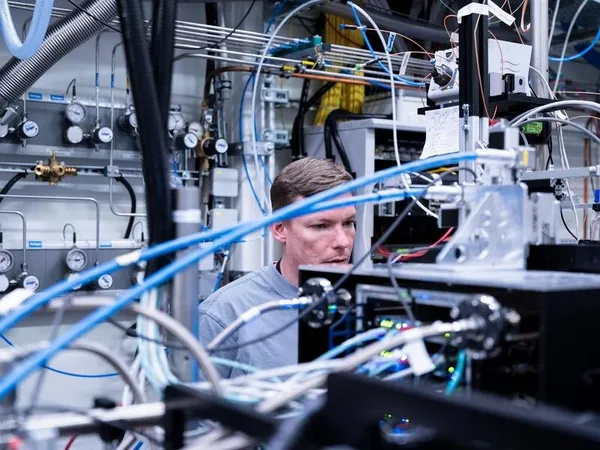
Unveiling Quantum Magic: X-ray Flashes Illuminate Electron-Hole Dynamics in Quantum Dots
2025-08-18
Author: Sarah
Revolutionizing Solar Cell Technology
Have you ever wondered what happens at the atomic level when light hits solar cells? When photons strike, they create tiny electron-hole pairs, setting off a chain reaction that makes electricity possible. Electrons dash around freely while holes—essentially positive voids—also move through the semiconductor, both carrying electrical charge.
These charged particles slightly warp the atomic lattice around them, and until now, this subtle effect remained elusive to scientists.
Groundbreaking Observations at European XFEL
But a pioneering international team at the European XFEL has made waves—with cutting-edge X-ray laser technology, they captured this barely-visible atomic dance for the very first time. "We were able to visualize this change using extremely fast flashes from the European XFEL's X-ray laser," explains Johan Bielecki, a leading scientist in this groundbreaking study. This research potentially paves the way for the next generation of solar materials and advanced light-emitting diodes.
The Microscopic Marvel of Quantum Dots
At the heart of this exploration lies a minuscule quantum dot—measuring just a few millionths of a millimeter—composed of cesium, lead, and bromine (CsPbBr3). Quantum dots are special because their properties transcend traditional physics, revealing the extraordinary world of quantum mechanics.
When light impacts this quantum dot, the resulting electron-hole pairs create microscopic 'dents' in the crystal lattice—a phenomenon known as exciton-polaron. While the distortion affects only a handful of atoms, its implications are monumental, influencing the material's optical and electronic characteristics.
Unlocking Future Technologies
The precision required to detect this lattice deformation is extraordinary. Researchers utilized the world’s largest X-ray laser, located in Schenefeld, near Hamburg, which emits ultra-short, intense X-ray bursts—capturing images in a mere femtosecond (one quadrillionth of a second). It's akin to using a high-speed camera to freeze atomic motion.
The revelations gained from this study deepen our understanding of light-matter interactions, which is crucial for developing next-gen technologies—from sensitive light detectors and innovative displays to pivotal components for quantum computers.
A Bright Future Ahead
As lead author Zhou Shen from the Max Planck Institute for the Structure and Dynamics of Matter states, "The better we understand the deformation, the better we can engineer enhanced materials for more efficient displays or powerful sensors." The findings not only advance scientific knowledge but also hint at a future where we can finely control these effects, leading to the design of even more powerful, energy-efficient optoelectronic components.




 Brasil (PT)
Brasil (PT)
 Canada (EN)
Canada (EN)
 Chile (ES)
Chile (ES)
 Česko (CS)
Česko (CS)
 대한민국 (KO)
대한민국 (KO)
 España (ES)
España (ES)
 France (FR)
France (FR)
 Hong Kong (EN)
Hong Kong (EN)
 Italia (IT)
Italia (IT)
 日本 (JA)
日本 (JA)
 Magyarország (HU)
Magyarország (HU)
 Norge (NO)
Norge (NO)
 Polska (PL)
Polska (PL)
 Schweiz (DE)
Schweiz (DE)
 Singapore (EN)
Singapore (EN)
 Sverige (SV)
Sverige (SV)
 Suomi (FI)
Suomi (FI)
 Türkiye (TR)
Türkiye (TR)
 الإمارات العربية المتحدة (AR)
الإمارات العربية المتحدة (AR)